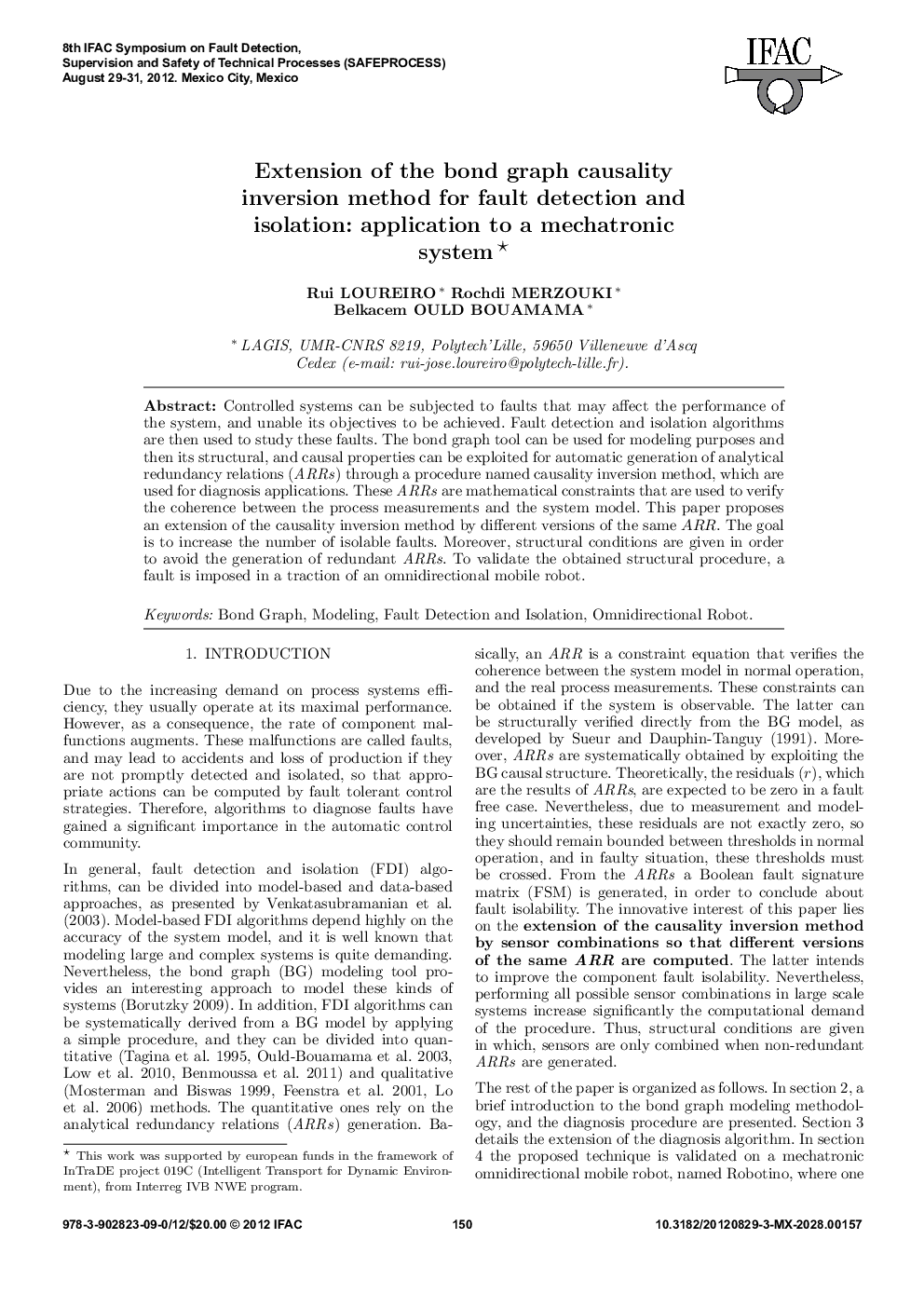| Article ID | Journal | Published Year | Pages | File Type |
|---|---|---|---|---|
| 709585 | IFAC Proceedings Volumes | 2012 | 6 Pages |
Controlled systems can be subjected to faults that may affect the performance of the system, and unable its objectives to be achieved. Fault detection and isolation algorithms are then used to study these faults. The bond graph tool can be used for modeling purposes and then its structural, and causal properties can be exploited for automatic generation of analytical redundancy relations (ARRs) through a procedure named causality inversion method, which are used for diagnosis applications. These ARRs are mathematical constraints that are used to verify the coherence between the process measurements and the system model. This paper proposes an extension of the causality inversion method by different versions of the same ARR. The goal is to increase the number of isolable faults. Moreover, structural conditions are given in order to avoid the generation of redundant ARRs. To validate the obtained structural procedure, a fault is imposed in a traction of an omnidirectional mobile robot.
